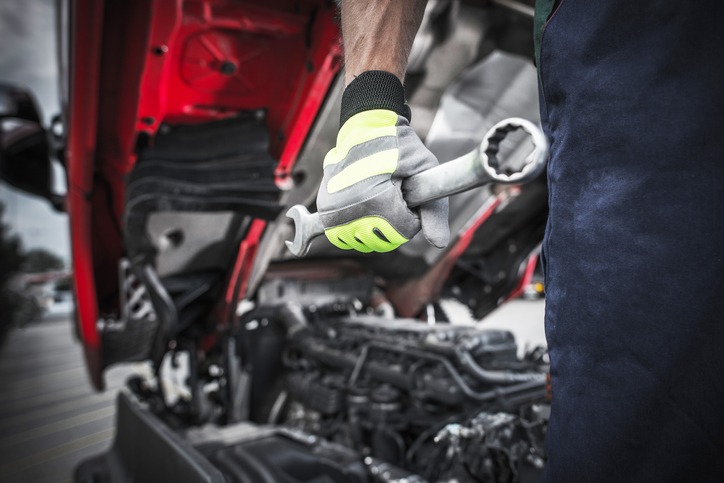With proper maintenance, farm equipment will be reliable, and you can avoid costly repairs. With a little TLC, your farm equipment will last longer, help you stay profitable, and continue to run safely and reliably for decades. Follow these tips to keep your farm equipment in good repair.
1. Regular Oil Changes
Just like your car or truck, your tractor needs regular oil and filter changes. In fact, because fields are dusty and your tractor may sit unused for months at a time, it is even more imperative to keep a close eye on your farm equipment’s oil.
With some know-how, you can change the oil in your tractor yourself. You should change it every six months or according to your manufacturer’s recommendations. When you’re using your equipment, check it daily or after about 10 hours of use. You should also check the levels in between oil changes.
2. Keep Maintenance Records
When you keep good records of the maintenance that you perform on your agricultural equipment, it not only helps you diagnose issues when they come up, but it also tells you when it’s time for the next scheduled maintenance activity.
Keep detailed maintenance logs in the same location as your user manuals and handbooks. You can also get a whiteboard to set up in your barn or shop and write the next oil change date to remind you.
3. Install a Sunshade Canopy
Sunshade canopies protect your equipment from harsh weather conditions. The seat and interior of the cab are all vulnerable to UV rays, and a canopy will keep them in good condition. You can get an aftermarket canopy for any brand of tractor, and with the variety of colors available, your John Deere sun shade canopy will even match the green on your tractor.
Sunshade canopies also help keep the cab cooler on hot days and protect the tractor’s operator. They are made of long-lasting quality metal and are available in several sizes. Sunshade canopies are simple to order and install, and you can enjoy comfort, safety, and peace of mind.
4. Tire Pressure and Tread Depth
It is essential to check the tread on your farm equipment’s tires to ensure your tractor has good traction, which is necessary for safe operation. Also, your tractor wheels will slip without the proper tread depth, leading to greater fuel consumption.
Check your tires regularly to determine when you should replace your tires. Tractor tires differ from vehicle tires, and you can’t judge when to change them based on tread depth and wear alone. Signs that your tires need to be replaced include dry rot, recurring air pressure problems, and tire damage.
5. Belt Inspection
Checking the belts on farm equipment is important to ensure that it’s operating correctly. Worn belts on a baler can cause uneven bales, for example.
Check the belts on your agricultural equipment every three months or after 100 hours of use, whichever comes first. Look for signs of wear and tear, including fraying, cracking, missing rubber pieces, and belts that are too loose or tight.
6. Grease all Zerks and Lubrication Points
The easiest way to find out everything you need to know about how to grease and lubricate your farm equipment is to consult your owner’s manuals. Then, use the grease recommended in your equipment manual, and grease your machines at suggested intervals, usually about every 50 hours. The important thing is not to neglect this critical preventative maintenance.
7. Inspect Fuel Lines and Hoses
Over time, fuel lines can become dry, cracked, and brittle. You should inspect them at least once yearly and more often if you use your equipment frequently. Look for signs of abrasion and cracking, and pay attention to the clamps and connections to ensure they are secure.
8. Check Safety Guards and Shields
Tractors are dangerous vehicles. According to the National Institute for Occupational Safety and Health, farming is one of the most hazardous jobs. The safety guards, shields, and roll bars on your farm equipment are there for a reason. They can protect the operator and others from moving parts, flying debris, and other potential hazards.
Before operating farm equipment, always perform a safety check. Walk around the machine to check for obstacles like children’s toys, rocks, and boards. Also, check that the wheels are free and not frozen to the ground or stuck in the mud.
9. Inspect the Engine
At least once a month, you should inspect the engine on your farm equipment. This inspection should be in addition to your regularly scheduled vehicle checks. Listen for unusual noises and vibrations, and visually inspect belts, hoses, radiator levels, and signs of wear.
10. Check the Fire Extinguisher
Your farm equipment should be equipped with a fire extinguisher. Check the expiration date and look for any damage or clogs. The tamper seal should be in place, and the pressure gauge should be in the green zone. Replace your extinguisher right away if necessary.
Infographic Provided By large steel buildings Kansas Company, K-Construction

